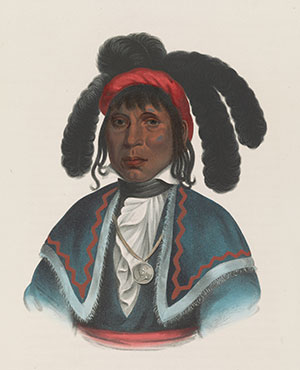Divided warpaths

One veteran of the Second Seminole War was the victor, the other became the vanquished
BY RICK CRARY

Everyone has heard of Osceola, but how about the Seminole warlord who replaced him during the Florida War? Coacoochee was his name and the safest prison in the peninsula couldn’t hold him. Not for long. He was just as dangerous, just as dashing, just as fiercely brilliant as Osceola — even more so. As the chief opponent of the 1830 Indian Removal Act, no place in Florida was safe for soldiers and white settlers while Coacoochee was running free.
He and his devoted warriors could be lying in ambush within every thicket, along any trail, behind any clump of trees. It is one of history’s ironies that a future Yankee warlord famous for his own brand of terror, William Tecumseh Sherman, would play a key role in bringing Coacoochee’s reign to an end — right here on the Treasure Coast.
According to his biographer Susan A. Miller, a scholar of Seminole descent, his name should be pronounced CoAHcoochee or GoAHgoojee. That takes some getting used to, so many historians have taken the easy way out and resorted to calling him Wild Cat, based on a loose translation of his Seminole name.
History’s victors tend to run roughshod over some of the finer details of yesteryear’s reality. For instance, as Miller tells us in her book Coacoochee’s Bones, Osceola’s name wasn’t really Osceola. It was Asin Yahola, but a mispronunciation caught on with the public and became a permanent part of his legend.
